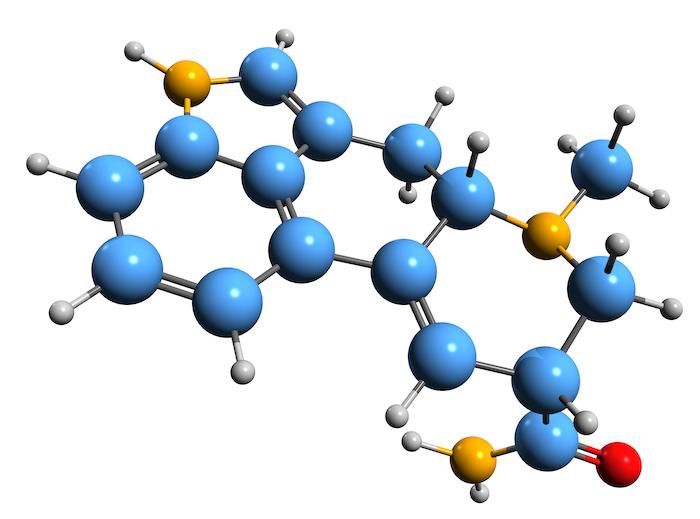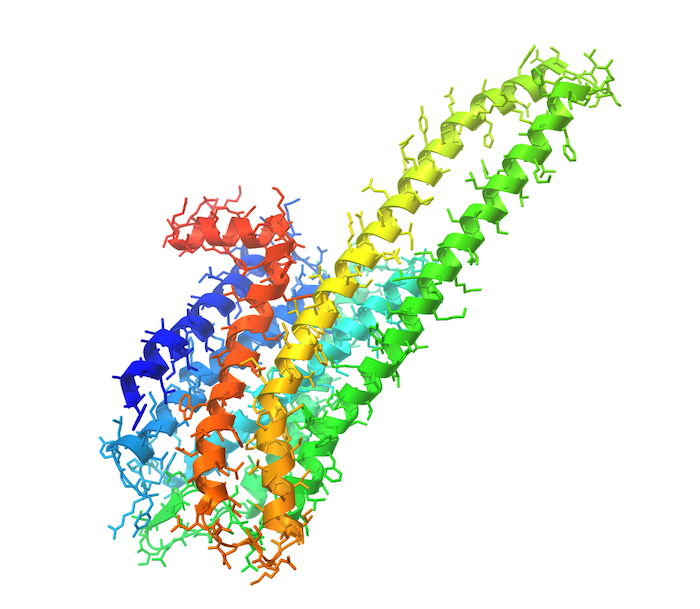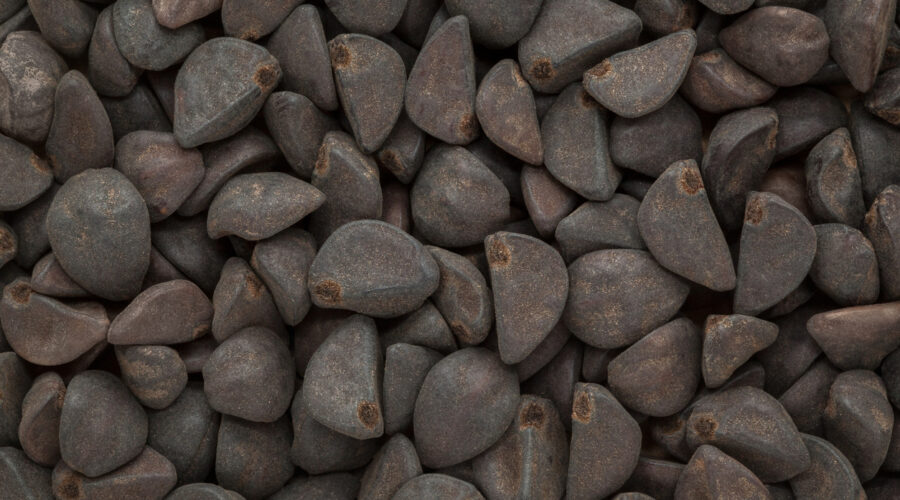The Forgotten Psychedelic: A Journey into the Mystical Realm of LSA
LSA — also known as ergine — is a psychedelic compound with a long history of use. However, for various reasons, it is not a common psychedelic to use. Based on the family of compounds it belongs to, it shares some similarities with LSD. But there are important differences between the two drugs as well.
This guide will explore all aspects of LSA, including its chemistry, pharmacology, history, effects, and legal status.
RELATED: The Collective Unconscious And Psychedelics – How They Relate
LSA’s Chemistry

LSA is a natural psychedelic compound belonging to the lysergamide class of alkaloids. Lysergamides are amides of lysergic acid. The most well-known example of a lysergamide is lysergic acid diethylamide (LSD). Lysergamides like LSA and LSD fall under the broader category of alkaloids known as ergolines. Ergoline alkaloids all have a common structure: a tetracyclic ergoline ring.
The chemical structure of LSA is made up of a core structure of lysergic acid. It is structurally similar to LSD. But there are chemical differences between the two, which translates into different effects.
LSA’s Pharmacology

LSA, like classic psychedelics such as LSD, causes psychedelic effects by binding to serotonin 5-HT2A receptors in the brain. However, researchers note that LSD has a stronger affinity for these receptors compared to LSA. This is most likely why the psychedelic effects of LSD are stronger than those of LSA.
LSA is in the seeds of various species of morning glory, as well as Argyreia nervosa (Hawaiian baby woodrose). Many believe that LSA is the primary psychedelic constituent of morning glory and Hawaiian baby woodrose seeds.
Yet this may not be the case, as studies on isolated and synthetic LSA report only minor psychedelic effects.
This suggests the compound plays a small role in the overall psychedelic effects that come from ingesting these seeds. Other lysergamide alkaloids contained in these seeds — including iso-LSA and LSH — may, therefore, add to the experience.
The highest concentration of LSA is in the seeds of Rivea corymbosa, Ipomoea violacea, and Argyreia nervosa.
Here’s What LSA Does To You
Like the more commonly used psychedelics, LSA can induce a range of subjective effects.
Visual Effects
- Color enhancement
- Depth perception distortions
- Objects morphing
- Color shifting
- Tracers
- Geometric hallucinations
Cognitive Effects
- Introspection
- Delusion
- Increased music appreciation
- Increased sense of humor and laughter
- Thought acceleration
- Time distortion
Auditory Effects
- Enhancement
- Distortion
- Auditory hallucinations
Emotional Effects
- Euphoria
- Bliss
- Joy
- Empathy
- Anxiety
- Fear
- Panic
Mystical Effects
- Ego death
- Transcendence of time and space
- A sense of the holy, sacred, or divine
- Ineffability
- A feeling of unity or interconnectedness
Physical Effects
- Pupil dilation
- Excessive yawning
- Increased heart rate
- Nausea
- A pleasurable tingling sensation
- Physical euphoria
- Sedation
- Perception of bodily heaviness
- Motor control loss
LSA vs. LSD
While structurally similar to LSD, LSA is distinct in many ways.
Natural vs. Semi-Synthetic
Firstly, LSA is a natural psychedelic compound. In contrast, LSD is semi-synthetic, in that it can be derived from ergot alkaloids — yet it is not itself found in nature.
History Of Use
LSA has a long history of use, whereas LSD’s use is much more recent.
The Swiss chemist Albert Hofmann first synthesized LSD in 1938 and the first LSD trip was had by Hofmann in 1943 when he inadvertently absorbed the compound through his fingertips. Studies on LSD began in the 50s. These continued in the 60s, which is when recreational use of the drug really took off.
So, the history of LSD spans less than 100 years, whereas LSA has been in use for millennia.
Effects
As mentioned earlier, LSD provides a much stronger psychedelic experience. However, a person needs to take a high dose of LSA-containing seeds to achieve visual effects. When compared to LSD, the visual effects of LSA are mild in comparison to the intensity of its cognitive and physical effects.
LSA is also predominantly sedating, whereas LSD is quite stimulating.
Other physical effects of LSA are known to be more uncomfortable than those produced by LSD. These unpleasant effects include vasoconstriction (narrowing of blood vessels), leading to muscle spasms and contractions, and leg cramps.
Consuming LSA-containing seeds can cause quite intense nausea, as well as vomiting. However, this is thought to be mostly caused by other compounds in the seeds and not LSA itself.
What Is LSA’s Legal Status?
In most countries, LSD is a highly prohibited substance. In the United States, it is a Schedule I drug. This means the assumption is it does not have medical value, while also having a high potential for abuse.
The legal status of consuming, cultivating, and possessing LSA, conversely, differs depending on the country.
In the U.S., there are no laws against possessing LSA-containing seeds. However, possession of the pure compound could land you into trouble with the law. This is because LSA is a Schedule III drug under the Controlled Substances Act.
In the U.K., LSA is like LSD — a Class A substance, categorized as a precursor to LSD. It’s legal to possess Hawaiian baby woodrose seeds in the U.K. It’s also legal to sell them (so long as they are not being sold for the purpose of human consumption).
In Canada, LSA is not illegal to possess — as it is not in Canada’s Controlled Drugs and Substances Act. But it is likely illegal to sell for human consumption.
In New Zealand, LSA is a controlled substance. However, the plants and seeds of the morning glory species are legal to possess, cultivate, buy, and distribute.
Most Australian regions prohibit the consumption of LSA-containing seeds under state legislation.
What Is LSA’s Safety
There are no studies on the toxicity and long-term health effects of recreational LSA use. The toxic dose is unknown.
Anecdotally, while people may have had physically uncomfortable experiences after consuming LSA-containing seeds, people have not experienced negative health effects from low to moderate doses.
Like other psychedelics, many consider LSA to be non-addictive with a low potential for abuse. There are no withdrawal symptoms when people stop use. Tolerance to the effects of LSA appears quickly after ingestion. After that, tolerance will return to baseline after about seven days.
Since buying and possessing LSA-containing seeds is legal in many countries, procuring LSA may be easier and feel less risky than using prohibited psychedelics. However, because LSA-containing seeds tend to produce weak psychedelic effects while potentially causing a great deal of physical discomfort, this makes them a less appealing option than, say, LSD or magic mushrooms.
Nonetheless, many psychonauts have found that LSA is capable of offering enjoyable and profound psychedelic experiences.
FAQs About LSA
If you want to try LSA, but you get drug trusted for work or for a sports competition, you may be wondering if the substance shows up on a drug test.
The common forms of drug tests are the urinalysis 5, 10, and 15-panel tests. Urinalysis — a portmanteau of the words urine and analysis — is a test of your urine, which is able to detect traces of certain psychoactive compounds. The number preceding “panel” refers to the number of drugs being tested. “Panel” refers to the substance or family of drugs being tested.
The 5-panel drug test screens for:
– Opiates
– Cocaine
– Cannabis
– Phencyclidine (PCP)
– Amphetamines/methamphetamines
The 10-panel drug test includes these five, as well as other substances, such as barbiturates and methaqualone (Quaaludes, ludes). The 15-panel test includes additional drugs, such as MDMA (ecstasy).
Crucially, none of these tests will detect psychedelic compounds, including LSA. This compound is not looked for specifically in most standard and extended drug tests. However, due to its chemical structure, it has the potential to possibly trigger an alert on tests looking for LSD. Yet most employers will not use drug tests looking for classic psychedelics like LSD, so you shouldn’t have to worry about this possibility.
Most sniffer dogs can be trained to pick up the smell of cannabis, cocaine, heroin, methamphetamine, opiates, and ecstasy. They are not typically trained to detect psychedelics, including LSA and the seeds containing it.
It is unlikely, then, a dog will pick up on any LSA-containing seeds you are carrying. However, you should be aware that if you’re at an airport and carrying such seeds, they can show up on an X-ray.
Depending on the country you’re in or traveling to, the seeds may be legal (if not intended for human consumption). You should be aware of the risks of traveling internationally with the seeds, even if drug-sniffing dogs aren’t trained to give a signal when smelling them.
A “hard drug” refers to a potent drug, such as heroin or cocaine, that can lead to physical or psychological dependency. LSA, like the classic psychedelics, is not known to produce physical dependency. Some users may become psychologically dependent on psychedelics, but this is rare.
Hard drugs are considered to have greater health hazards, a higher risk of addiction, and worse impacts on public order than “soft drugs”, such as cannabis. Nonetheless, the law and scientific researchers often refer to a classic psychedelic like LSD as a hard drug. While LSD sits in the Schedule I category of drugs, alongside heroin and cocaine, this doesn’t mean its risk profile is similar.
The terms “soft” and “hard”, in relation to drugs, are vague. But if “hard” is to stand for any drug that is associated with more harm (to the individual and society) compared to other drugs, then it would be mistaken to include classic psychedelics in this category. After all, they are not physically addictive and they are non-toxic.
Since LSA is similar to LSD, there aren’t really any reasons to consider it a hard drug. This isn’t to say that it cannot cause harm, of course. Even if you want to think of LSA as a soft drug, it can still result in distressing psychological and physical effects.
Disclaimer: We do not endorse the illicit use of Schedule 1 psychedelic compounds in a non-therapeutic setting. We do, however, hope the regulations look at the research to understand how these drugs can used in powerfully positive ways.




Donald Bean
December 30, 2022 at 4:40 amI was recently arrested for LSD when I was definitely told the substance I possessed was Called LSA.
Is there a possibility that the two would have possible similar test results in a Lab?